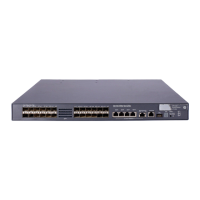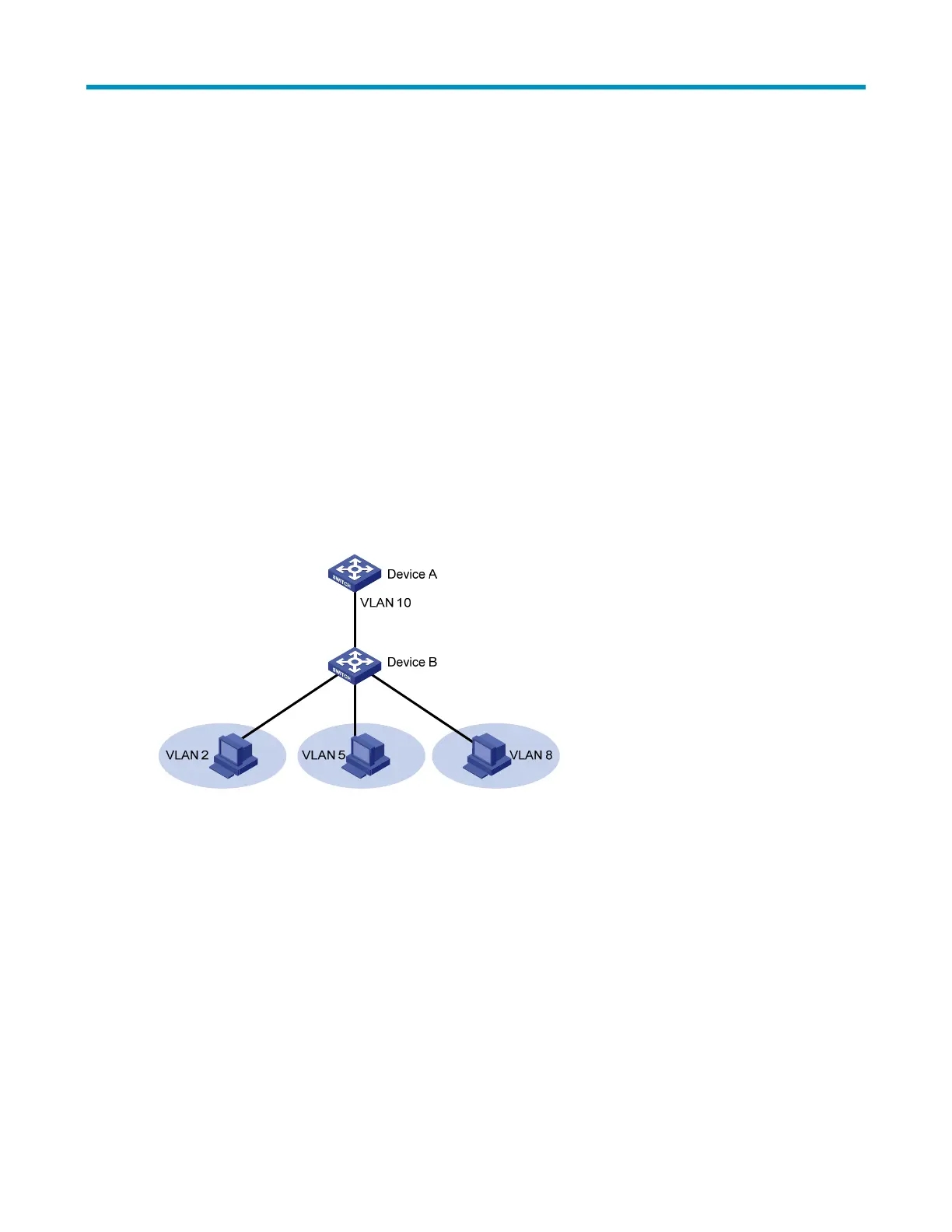132
Isolate-user-VLAN configuration
An isolate-user-VLAN uses a two-tier VLAN structure. In this approach, both an isolate-user-VLAN and
secondary VLANs are configured on the same device.
The isolate-user-VLAN implementation delivers the following benefits:
• Isolate-user-VLANs are mainly used for upstream data exchange. An isolate-user-VLAN can be
associated with multiple secondary VLANs. Because the upstream device identifies only the isolate-
user-VLAN and not the secondary VLANs, network configuration is simplified and VLAN resources
are saved.
• You can isolate Layer 2 traffic from different users by assigning ports connected to them to different
secondary VLANs. To enable communication between secondary VLANs associated with the same
isolate-user-VLAN, you can enable local proxy ARP on the upstream device (such as Device A in
Figure 42) to r
ealize Layer 3 communication between the secondary VLANs.
As shown in Figure 42,
the isolate-user-VLAN function is enabled on Device B. VLAN 10 is the isolate-
user-VLAN. VLAN 2, VLAN 5, and VLAN 8 are secondary VLANs associated with VLAN 10 and are
invisible to Device A.
Figure 42 An isolate-user-VLAN example
To configure an isolate-user-VLAN, complete the following tasks:
1. Configure the isolate-user-VLAN.
2. Configure the secondary VLANs.
3. Associate the isolate-user-VLAN with the specified secondary VLANs.
4. Configure uplink and downlink ports:
{ Configure the uplink ports, for example, the port connecting Device B to Device A in Figure 42, to
operate in promiscuous mode in the specified VLAN, so that the uplink ports can be added to
the specified isolate-user-VLAN and the secondary VLANs associated with the isolate-user-VLAN
automatically.
{ Configure the downlink ports, for example, the ports connecting Device B to hosts in Figure 42, to
operate in host mode, so that the downlink ports can be added to the isolate-user-VLAN
associated with the secondary VLAN automatically.

